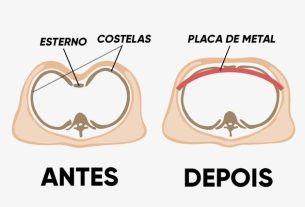Penile cancer is a rare tumor that can appear in the organ or just in the skin that covers it, causing changes in the color and texture of the skin, as well as the appearance of nodules or wounds that take a long time to disappear.
This type of cancer is more common in elderly people over 60 years of age, but it can also occur in young people, especially in men who smoke, who have poor intimate hygiene or who have intimate contact without a condom, for example.
Penile cancer can be cured, however surgery may be necessary to remove the affected tissues and, therefore, the larger the tumor or the later it is identified, the greater the chances of needing to remove a larger piece of the penis.

Main symptoms
The main symptoms of penile cancer are:
- Appearance of a reddish wound that does not heal;
- Pain in the penis that does not improve after 4 weeks and increases over the weeks;
- Nodule on the penis, glans or foreskin;
- Thicker skin on the penis or foreskin, making it difficult to retract;
- Change in the color of the penis or foreskin;
- Bad-smelling discharge that comes out of the urethra;
- Bleeding from the penis;
- Swelling of the end of the penis;
- Pain and swelling in the groin area;
- Weight loss without apparent cause;
- Tiredness.
Some of these symptoms, especially the wound that appears on the penis and does not heal, may be indicative of other diseases, such as herpes, syphilis or autoimmune diseases, for example. Therefore, it is best to consult a urologist to carry out the necessary diagnostic tests, confirm the cause and initiate appropriate treatment. Learn about other causes of penile wounds.
Is bloody urine a sign of penile cancer?
In general, the presence of blood in the urine is not a characteristic symptom of penile cancer, but it may be indicative of prostate cancer or a urinary tract infection. Therefore, it is important that a urologist is consulted so that an evaluation can be carried out to identify the cause of bloody urine and, thus, the best treatment can be initiated. Find out the main causes of bloody urine.
How the diagnosis is made
The diagnosis of penile cancer is made by the urologist based on the evaluation of the signs and symptoms described by the man. In addition, it is usually recommended to perform a biopsy in order to check whether there are any changes in the cells of the penis that are indicative of malignancy.
Causes of penile cancer
The exact cause that leads to the development of penile cancer is still unknown, however some factors may favor the development of this disease, the main ones being:
- Smoking;
- Few intimate hygiene habits, so that there is an increase in the amount of secretion accumulated under the foreskin;
- HPV virus infection;
- Absence of circumcision or circumcision performed as an adult;
- Age over 60 years old.
Having these risk factors does not necessarily indicate that a man will develop penile cancer, however it is important that he consults a urologist regularly, especially after the age of 60.
How the treatment is carried out
Treatment must be guided by an oncologist or a urologist and normally begins with surgery to remove as much of the affected tissue as possible, and is then complemented with chemotherapy or radiotherapy to eliminate the remaining tumor cells.
Depending on the size and degree of development of the cancer, a man may experience complications after surgery, such as erectile dysfunction, as the more tissue that needs to be removed, the greater the risk of affecting the muscles necessary for penis erection. However, in these cases, the doctor may recommend the use of a penile prosthesis that allows the man to have and maintain an erection during intimate contact. Find out more about the penile prosthesis and how it works.
In more serious cases, when the tumor is at a very advanced stage, the doctor may recommend emasculation, which consists of the total removal of the entire sexual organ and testicles. For these cases, a new technique is being developed to perform penis transplantation, in order to restore full sexual function.
How penis transplant works
This type of treatment is being studied as a way to restore urinary and sexual capacity in patients who needed their entire penis removed during cancer treatment. This surgery is not yet available and during the tests, which have already been carried out, it took around 15 hours to connect all the blood vessels and nerves.
The transplanted organ must be from a donor with similar structural characteristics to reduce the risk of infections, hemorrhage and rejection. However, it is still not possible to predict the success of transplantation in treating erectile dysfunction, which can negatively affect the patient’s psychological health.
How to prevent the onset of cancer
To avoid penile cancer, it is important to take some precautions, such as:
- Perform daily hygiene of the penis, especially under the foreskin, to avoid bacterial and viral infections;
- Use a condom during intimate contact;
- Do not smoke.
Although there is no specific cause for the development of penile cancer, these precautions help to avoid some risk factors, such as poor hygiene or HPV infection, for example.
How to wash your penis properly
To perform proper penile hygiene, pull the skin covering the head of the penis back and wash it with water and neutral pH soap. At the end of the bath, it is also important to pull the skin on the head of the penis back and dry the area underneath the foreskin thoroughly.
Check out 5 simple steps to maintain penis hygiene and health.
Bibliography
- NHS. Symptoms -Penile cancer. Disponível em: <https://www.nhs.uk/conditions/penile-cancer/symptoms/#:~:text=Main%20symptoms%20of%20penile%20cancer&text=a%20rash,pull%20back%20the%20foreskin%20(phimosis)>. Acesso em 16 nov 2022
- MINISTRY OF HEALTH. Penile cancer: causes, symptoms, treatment, diagnosis and prevention. Available at: <https://antigo.saude.gov.br/saude-de-az/cancer-de-penis>. Accessed on Sep 14, 2021

Sign up for our newsletter and stay up to date with exclusive news
that can transform your routine!
Warning: Undefined array key "title" in /home/storelat/public_html/wp-content/plugins/link-whisper-premium/templates/frontend/related-posts.php on line 12
Warning: Undefined array key "title_tag" in /home/storelat/public_html/wp-content/plugins/link-whisper-premium/templates/frontend/related-posts.php on line 13



